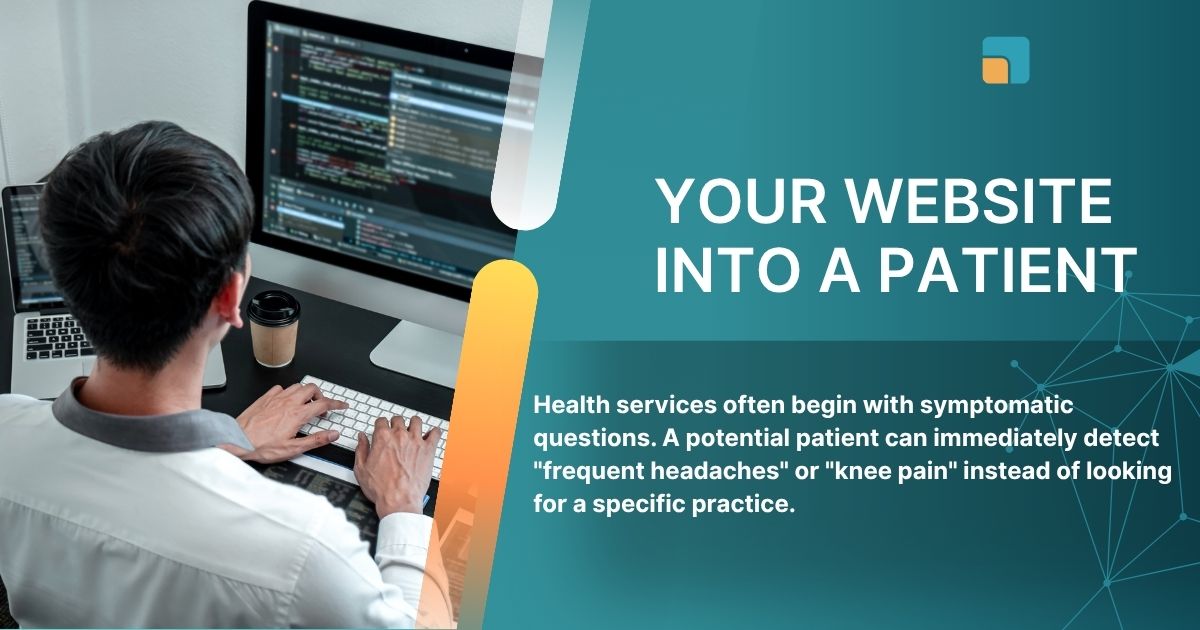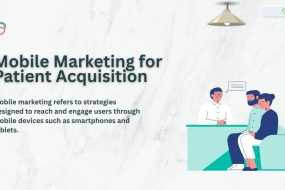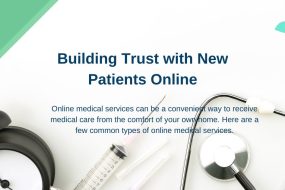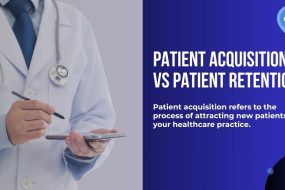
When it comes to attracting new patients online, medical practices face unique challenges. Unlike other companies, health professionals should balance the professional reliability with an acceptable message and navigate with strict compliance requirements. Your practice website acts as a digital front door for your clinic, and optimization of it for patient collection can dramatically affect your practice growth.
This broad guide will run through proven strategies to convert your site into a powerful tool to attract and convert new patients. You will detect specific adaptation techniques that meet the unique needs of health services and learn to build faith by encouraging potential patients to take action.
Understanding the Healthcare Consumer Journey
Before diving into a customization strategy, it is important to understand how patients find online for health care professionals. The patient’s journey usually follows a separate pattern that varies considerably from other consumer purchases.
Healthcare services often begin with symptomatic questions. A potential patient can immediately detect “frequent headaches” or “knee pain” instead of looking for a specific practice. This means that the content of your site must address both symptomatic findings and training -specific inquiries.
Trust plays a paramount role in health services. Patients evaluate suppliers based on the general professional appearance of credentials, reviews and online appearance. They are looking for insurance that they make the right choice for their health and welfare.
Crafting Patient-Focused Content That Converts
Your website content should speak directly to patient concerns and questions. Start by identifying the most common issues your ideal patients face, then create content that addresses these pain points comprehensively.
Address Common Questions and Concerns
Develop ingredients that can often expect patients you to be treated under the conditions you are treated, processes and their journey. This approach meets double purposes: It provides valuable information to potential patients who keep your practice as an official resource.
Instead of technical medical details, you create a devoted page for each service you offer, focusing on patient benefits. For example, instead of listing “arthroscopic knee surgery”, you can tell how this minimal invasive procedure can help patients return to their favorite activities faster.
Use Patient-Friendly Language
Medical terminology can intimidate potential patients and create barriers to engagement. Write content using clear, accessible language that patients can easily understand. When medical terms are necessary, provide simple explanations or definitions.
Consider the emotional state of someone searching for healthcare information. They may be anxious, confused, or in pain. Your content should acknowledge these feelings while providing reassurance and clear next steps.
Optimizing for Local Search Visibility
Most patients search for healthcare providers within their geographic area, making local SEO optimization essential for medical practices.
Claim and Optimize Your Google Business Profile
Your Google Business Profile serves as a crucial touchpoint for local patients. Ensure all information is accurate and complete, including your practice name, address, phone number, hours of operation, and services offered.
Regularly update your profile with posts about new services, health tips, or practice updates. Encourage satisfied patients to leave reviews, and respond professionally to all feedback, both positive and negative.
Create Location-Specific Content
Develop content that specifically mentions your city, neighborhood, or region. This might include blog posts about local health concerns, community involvement, or location-specific service offerings.
Consider creating separate pages for each location if you have multiple offices, ensuring each page is optimized for its specific geographic area.
Building Trust Through Design and User Experience

The visual appearance and functionality of your website significantly impact patient trust and conversion rates.
Professional Visual Design
Your website design should reflect the professionalism and competence patients expect from healthcare providers. Use clean, modern layouts with plenty of white space. Choose a color scheme that feels calming and trustworthy, such as blues, greens, or neutral tones.
High-quality photography makes a substantial difference in perceived credibility. Include professional photos of your practice, staff, and facilities. Avoid generic stock photos that don’t represent your actual practice.
Mobile Optimization is Non-Negotiable
Many patients search for healthcare providers on their mobile devices, especially when dealing with urgent health concerns. Your website must provide an excellent experience across all devices.
Ensure text is easily readable on small screens, buttons are large enough to tap comfortably, and pages load quickly. Test your website regularly on various devices and browsers to identify and fix any issues.
Strategic Conversion Optimization
Converting website visitors into patients requires strategic placement of conversion opportunities throughout your site.
Streamline the Appointment Booking Process
Make it as easy as possible for patients to schedule appointments. Prominent “Book Now” buttons should appear on every page, and the booking process should be simple and intuitive.
Consider offering online scheduling options, which many patients prefer for convenience. If online booking isn’t available, ensure your phone number is prominently displayed and easily clickable on mobile marketing for patient devices.
Implement Trust Signals
Display credentials, certifications, and professional affiliations prominently on your website. Include patient testimonials and reviews, as social proof significantly influences healthcare decisions.
Consider adding security badges, especially if you handle patient information or payments online. These small details contribute to overall trust and credibility.
Content Marketing for Patient Acquisition
Regular content creation helps establish your practice as a trusted authority while improving search engine visibility.
Educational Blog Content
Develop a content calendar focusing on topics relevant to your patient base. Write about common conditions, prevention strategies, treatment options, and lifestyle tips related to your specialty.
Each blog post should be thoroughly researched and accurate, as medical misinformation can damage your reputation and potentially harm patients. Consider having medical content reviewed by appropriate professionals before publication.
Patient Success Stories
Share anonymized patient success stories that highlight positive outcomes and experiences. These stories provide social proof while helping potential patients envision their own successful treatment journey.
Always obtain proper consent before sharing any patient information, and follow all HIPAA guidelines when creating this content.
Measuring and Improving Performance
Successful website optimization requires ongoing measurement and refinement based on actual performance data.
Track Key Metrics
Monitor metrics that directly relate to patient acquisition, such as website traffic, appointment bookings, phone calls, and contact form submissions. Use tools like Google Analytics to understand user behavior and identify areas for improvement.
Pay attention to which pages generate the most patient inquiries and which traffic sources provide the highest-quality leads. This information helps prioritize optimization efforts and budget allocation.
Learn more How to Do Keyword Research for Telehealth
Regular Testing and Updates
Continuously test different elements of your website to improve conversion rates. This might include testing different call-to-action buttons, headline variations, or form placements.
Keep your website content fresh and up-to-date. Regular updates signal to search engines that your site is active and relevant, which can positively impact rankings.
Compliance and Security Considerations
Healthcare websites must adhere to specific regulations and security standards that don’t apply to other industries.
HIPAA Compliance
Ensure your website meets all HIPAA requirements, especially if you collect patient information through contact forms or patient portals. This includes proper encryption, secure data storage, and appropriate privacy notices.
Professional Standards
All content should meet professional medical standards and avoid making unrealistic promises or guarantees about treatment outcomes. Focus on providing accurate, helpful information rather than marketing claims that could be misleading.
Click here and know about Patient Acquisition Strategies
Building Long-Term Patient Relationships

While attracting new patients is important, your website should also support long-term patient relationships and retention.
Patient Resources and Education
Create a comprehensive resource section with information about pre-appointment preparation, post-treatment care, and general health maintenance. These resources add value for existing patients while attracting new ones through search engines.
Communication Tools
Consider implementing features that improve patient communication, such as patient portals, secure messaging systems, or appointment reminder systems. These tools enhance patient satisfaction and reduce administrative burden.
Taking Action on Your Website Optimization
Patient collection requires a systematic approach to optimize the practice website that balances user experience, visibility of search engines and professional reliability. Begin by revising the current performance of the site, identifying the most pressure problems and implementing systematic improvements.
Remember that customization of websites is a continuous process, not a once -a project. The patient must develop, must find algorithms, and new technologies emerge. Regular focus on the site’s performance and user experience will ensure continuous success in attracting and changing new patients.
Be aware of providing fair value to potential patients through informative, reliable materials and an extraordinary user experience. When your website actually meets the patient’s needs, the search ranking is improved and naturally increases patient collections.


















No Comments